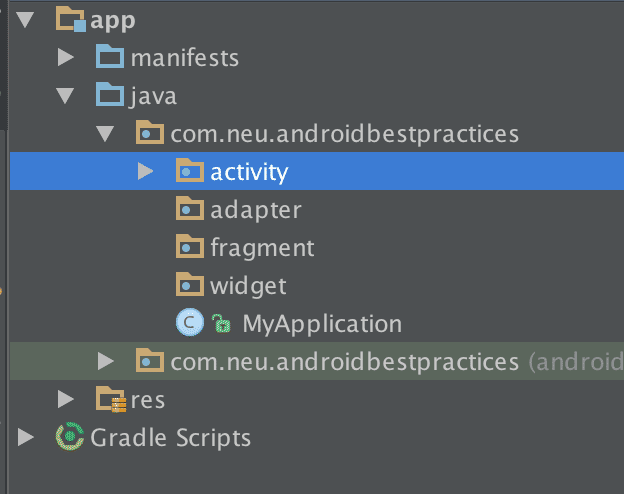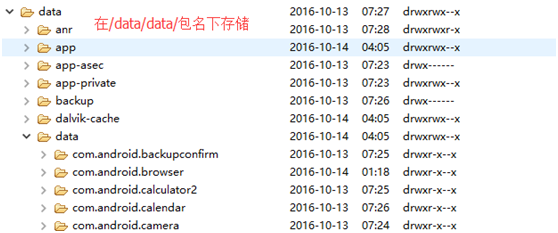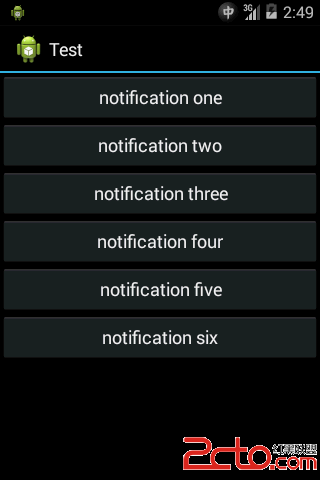如果你需要你的service和其他進程通信,那麼你可以使用一個Messenger來提供這個接口。
這種方法允許你在不使用 AIDL的情況下,進行跨進程通信IPC。
實現步驟
下面是一個如何使用 Messenger的小總結:
1. service實現一個 Handler 接收客戶端每一次調用的回調。
2. Handler 用來創建一個Messenger對象,它是一個Handler的引用。
3. Messenger創建一個 IBinder,service從 onBind()中把它返回給客戶端。
4. 客戶端使用這個IBinder來實例化Messenger (service的Handler的引用),客戶端使用它來向service發送Message對象。
5. service在它的Handler中接收每一個Message對象,在它的 handleMessage()方法中。
Code
復制代碼
public class MessengerService extends Service
{
/** Command to the service to display a message */
static final int MSG_SAY_HELLO = 1;
/**
* Handler of incoming messages from clients.
*/
class IncomingHandler extends Handler
{
@Override
public void handleMessage(Message msg)
{
switch (msg.what)
{
case MSG_SAY_HELLO:
Toast.makeText(getApplicationContext(), "hello!",
Toast.LENGTH_SHORT).show();
break;
default:
super.handleMessage(msg);
}
}
}
/**
* Target we publish for clients to send messages to IncomingHandler.
*/
final Messenger mMessenger = new Messenger(new IncomingHandler());
/**
* When binding to the service, we return an interface to our messenger for
* sending messages to the service.
*/
@Override
public IBinder onBind(Intent intent)
{
Toast.makeText(getApplicationContext(), "binding", Toast.LENGTH_SHORT)
.show();
return mMessenger.getBinder();
}
}
復制代碼
注意 Handler中的 handleMessage() 方法是service接收到來的 Message並且決定做什麼的地方。
客戶端需要做的僅僅是創建一個基於service所返回的 IBinder的 Messenger,然後用 send()方法發送信息。
比如,這裡有一個簡單的activity和service綁定並且發送信息給service:
復制代碼
public class ActivityMessenger extends Activity
{
/** Messenger for communicating with the service. */
Messenger mService = null;
/** Flag indicating whether we have called bind on the service. */
boolean mBound;
/**
* Class for interacting with the main interface of the service.
*/
private ServiceConnection mConnection = new ServiceConnection()
{
public void onServiceConnected(ComponentName className, IBinder service)
{
// This is called when the connection with the service has been
// established, giving us the object we can use to
// interact with the service. We are communicating with the
// service using a Messenger, so here we get a client-side
// representation of that from the raw IBinder object.
mService = new Messenger(service);
mBound = true;
}
public void onServiceDisconnected(ComponentName className)
{
// This is called when the connection with the service has been
// unexpectedly disconnected -- that is, its process crashed.
mService = null;
mBound = false;
}
};
public void sayHello(View v)
{
if (!mBound)
return;
// Create and send a message to the service, using a supported 'what'
// value
Message msg = Message
.obtain(null, MessengerService.MSG_SAY_HELLO, 0, 0);
try
{
mService.send(msg);
}
catch (RemoteException e)
{
e.printStackTrace();
}
}
@Override
protected void onCreate(Bundle savedInstanceState)
{
super.onCreate(savedInstanceState);
setContentView(R.layout.main);
}
@Override
protected void onStart()
{
super.onStart();
// Bind to the service
bindService(new Intent(this, MessengerService.class), mConnection,
Context.BIND_AUTO_CREATE);
}
@Override
protected void onStop()
{
super.onStop();
// Unbind from the service
if (mBound)
{
unbindService(mConnection);
mBound = false;
}
}
}
復制代碼
注意這個例子並沒有展示service如何響應客戶端,如果你想要service響應,你需要在客戶端中創建一個 Messenger。
然後當客戶端接收到onServiceConnected()回調方法時,它會發送一個 Message到service,在它的send() 方法的replyTo參數中包含了客戶端的Messenger。
 Android開發之RecyclerView控件
Android開發之RecyclerView控件
 Android系統的五種數據存儲形式實例(一)
Android系統的五種數據存儲形式實例(一)
 Android開發之使用Notification.Builder
Android開發之使用Notification.Builder
 【Android】GreenDao 3.X 結合Volley以及Gson、ImageLoader實現數據存儲
【Android】GreenDao 3.X 結合Volley以及Gson、ImageLoader實現數據存儲